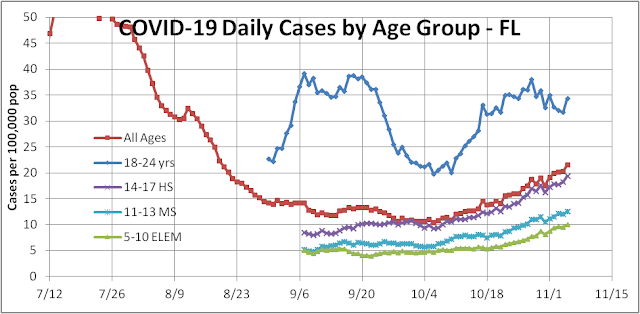Pre-Thanksgiving Dip in COVID-19 Cases

COVID-19 cases in the USA have shown a sharp decrease over the last 8 days causing the 7-day rolling average to peak and rollover (see figure below – red squares). The question is whether this is measuring a real lasting phenomenon – perhaps attributable to local COVID-19 fires burning out, or to mitigation factors taking hold, or to some temporary factor associated with the Thanksgiving holiday. The answer is probably a combination of all three that will ultimately be overwhelmed by an increase in Thanksgiving transmission. Some COVID-19 outbreaks have burned so strongly and for so long (3-4 months) that local “herd immunity” may be acting as a retardant to the fire. For example, in North Dakota (ND) 10.3% of the population has now been confirmed infected (see table below). State Confirmed Testing Est. Pop Deaths Death per Fatality Infection % Positive % Infection %


